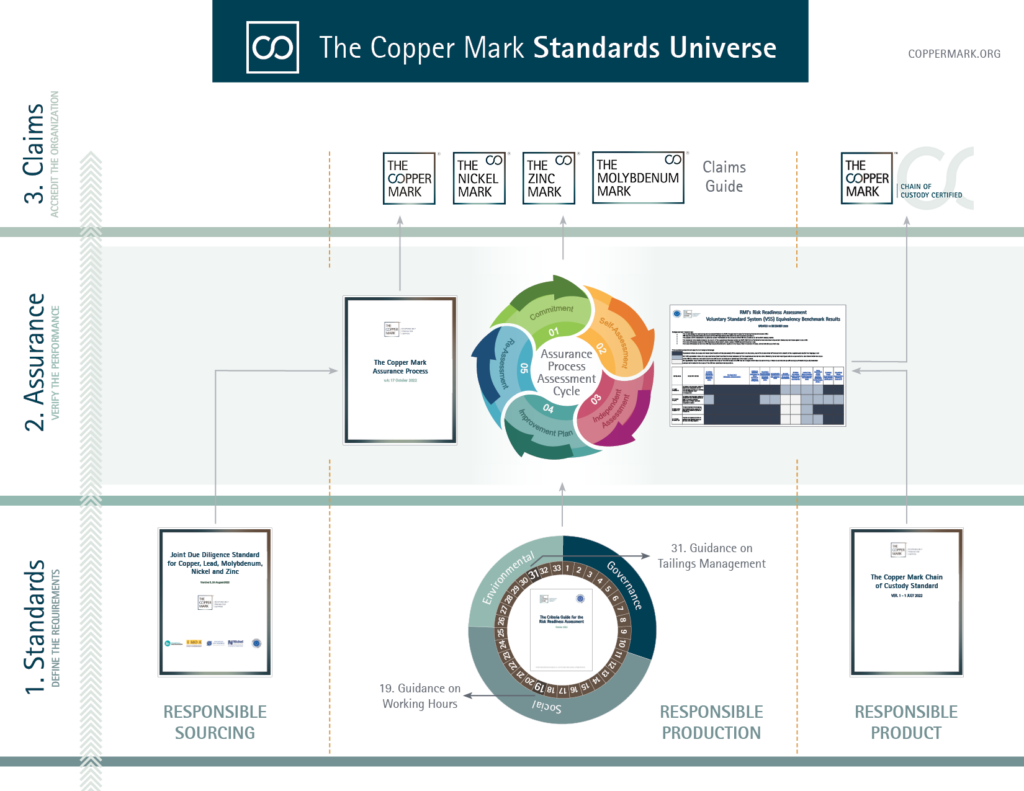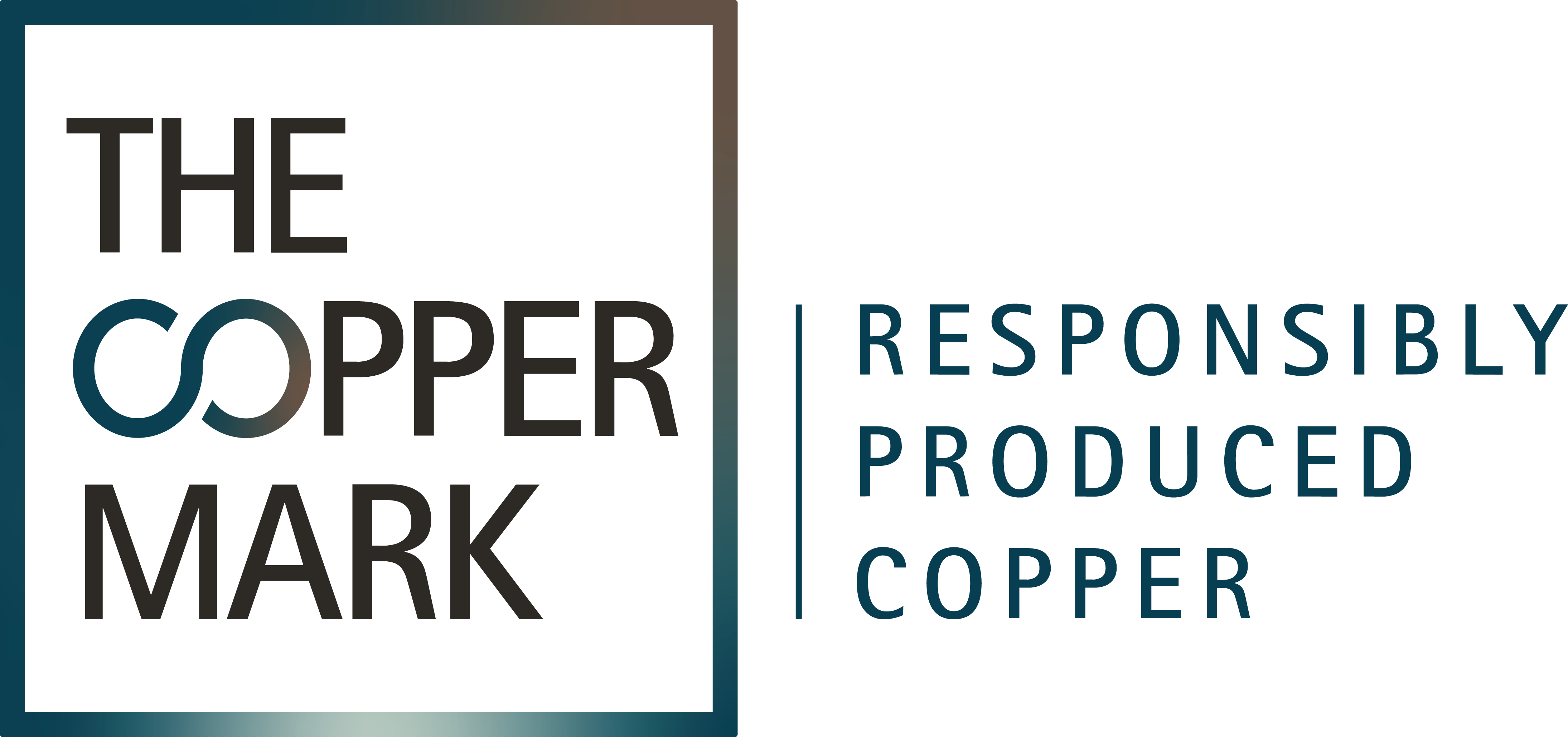The Copper Mark provides an efficient system to independently verify responsible production of copper that is recognized as credible by key stakeholders.
CORE DOCUMENTS
The following documents must be used by sites and assessors participating in the Copper Mark Assurance Framework. In case of inconsistency between versions, reference shall default to the official language version, which is English.

The Copper Mark Standards and Interpretive Guidance
- The Copper Mark Criteria Guide (CHI / ESP / FRA / IND) rev. 19 October 2023
- Joint Due Diligence Standard for Copper, Lead, Molybdenum, Nickel and Zinc rev. 26 August 2022 (CHI / ESP / JAP / RUS)
- Joint Due Diligence Assessment Tool rev. 10 January 2023 (CHI / ESP / JAP / RUS)
- The Copper Mark Chain of Custody Standard (CHI / ESP)
- Guidance on Criterion 31: Tailings Management
- Guidance on Due Diligence in Mineral Supply Chains (for Downstream Sites)
Assurance Process
- The Copper Mark Assurance Process, rev. 5, 19 October 2023 (CHI / ESP / JAP)
- The Copper Mark Claims Guide (CHI / ESP)
- Copper Mark Recognition Process
- RRA-Copper Mark Equivalency Matrix
- The Copper Mark Assessor Management Procedure
Policies and Procedures
- Policy on Human Rights and the Environment:
- The Copper Mark Due Diligence Procedure
- The Copper Mark Grievance Mechanism
- The Copper Mark Standard Setting Procedure
Previous Versions of Copper Mark Core Documents
- The Copper Mark Criteria Guide (CHI / ESP) rev. 24 February 2020
- The Copper Mark Assurance Process (CHI / ESP) rev. 5, 17 October 2022
- The Copper Mark Guidance on Working Hours
- The Copper Mark Guidance on Criterion 19. Tailings Management
Timing of adoption of RRA 3.0:
- 1 Jan. 2024 – RRA becomes effective: All new Copper Mark participants MUST use the new RRA
- 2024 – Current Copper Mark participants undergoing reassessment CAN CHOOSE between the old RRA or the new, but will be strongly encouraged to use the new
- 1 Jan. 2025 – All Copper Mark participants (new and old) MUST use the new RRA
Note that all other policies and procedures will be adopted as of 1 January 2024, regardless of status in the Copper Mark Assurance Framework.
